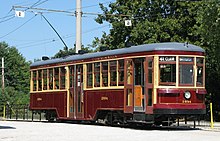
The Halton County Radial Railway is a working museum of electric streetcars, other railway vehicles, buses and trolleybuses. It is operated by the Ontario Electric Railway Historical Association (OERHA). It is focused primarily on the history of the Toronto Transit Commission (TTC) and its predecessor, the Toronto Transportation Commission, Its collection includes PCC, Peter Witt, CLRV and ALRV, and earlier cars from the Toronto streetcar system as well as G-series and M-series Toronto subway cars.
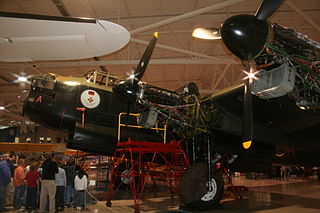
Victory Aircraft Limited was a Canadian manufacturing company that, during the Second World War, built mainly British-designed aircraft under licence. It acted as a shadow factory, safe from the reach of German bombers.

The Toronto and York Radial Railway was a transit operator providing services to the suburbs of Toronto, Ontario, Canada. It was a subsidiary of the Toronto Railway Company. The company was created by merging four Toronto-area interurban operations. The company was part of the empire of railway entrepreneurs Sir William Mackenzie and Donald Mann which included the Canadian Northern Railway and the parent Toronto Railway Company.
The Toronto Suburban Railway was a Canadian electric railway operator with local routes in west Toronto, and a radial (interurban) route to Guelph.
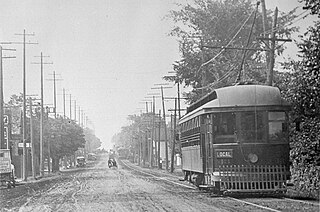
The Metropolitan Street Railway was the operator of the Metropolitan line in the Toronto area that started out as a local horsecar line and transformed itself into an electric radial line extending to Lake Simcoe, following an old stage coach route. In 1904, the railway was acquired by the Toronto and York Radial Railway (T&YRR) and became the T&YRR Metropolitan Division. In 1922, the City of Toronto acquired the T&YRR and contracted Ontario Hydro to manage the four T&YRR lines including the Metropolitan. In 1927, the TTC took over the operation of the Metropolitan Line to Sutton, and renamed it the Lake Simcoe line. In 1930, the TTC closed the Metropolitan Line but shortly reopened the portion between Glen Echo and Richmond Hill operating it as the North Yonge Railways until 1948.

The North Yonge Railways was a radial railway line operated by the Toronto Transportation Commission from 1930 to 1948 between Glen Echo (Toronto) and Richmond Hill. The line was created by reopening the southern portion of the TTC's Lake Simcoe radial line that had closed in 1930.

Canadian Car and Foundry (CC&F), also variously known as "Canadian Car & Foundry" or more familiarly as "Can Car", was a manufacturer of buses, railway rolling stock, forestry equipment, and later aircraft for the Canadian market. CC&F history goes back to 1897, but the main company was established in 1909 from an amalgamation of several companies and later became part of Hawker Siddeley Canada through the purchase by A.V. Roe Canada in 1957. Today the remaining factories are part of Alstom after its acquisition of Bombardier Transportation completed in 2021.

The Preston Car Company was a Canadian manufacturer of streetcars and other railway equipment, founded in 1908. The company was located in the town of Preston, Ontario. Preston sold streetcars to local transport operators including the Grand River Railway, the Toronto Railway Company and Toronto Civic Railways, and the Hamilton Street Railway. The company also sold a number of its distinctive ‘Prairie-style’ cars to operators in Alberta and Saskatchewan; one of these cars is being restored by the Saskatchewan Railway Museum. The Edmonton Radial Railway received 8 "Prairie" Prestons in 1909 and 1911 and 35 "Big" Prestons in 1913–14. Only a few Preston-built cars now remain, some of them in the collection of the Halton County Radial Railway museum. The Edmonton Radial Railway Society has in its collection "Prairie" Preston car 31 and "Big" Prestons numbers 53, 65 and 73.

Hawker Siddeley Canada was the Canadian unit of the Hawker Siddeley Group of the United Kingdom and manufactured railcars, subway cars, streetcars, aircraft engines and ships from the 1960s to 1980s.

Thomas Ahearn, PC was a Canadian inventor and businessman. Ahearn, a native of Ottawa, Ontario, was instrumental in the success of a vast streetcar system that was once in Ottawa, the Ottawa Electric Railway, and was the first chairman of Canada's Federal District Commission in 1927. He held several patents related to electrical items and headed companies which competed for decades with Ottawa Hydro as providers for electricity in Ottawa. Ahearn co-founded the Ottawa Car Company, a manufacturer of streetcars for Canadian markets.

The Toronto Transit Commission version of the Peter Witt streetcar was designed by the Cleveland Street Railway in the United States and built under license by Canada Car and Foundry of Montreal. A small number were also built by the Ottawa Car Company and the Preston Car Company. Between 1921 and 1923, 575 of these streetcars were ordered by the TTC for use on Toronto streets.
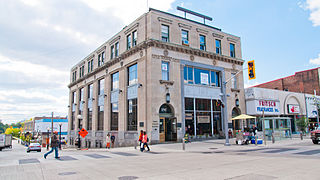
The Kitchener Public Utilities Commission was the municipal public utilities commission for the city of Kitchener, Ontario, Canada, as well as the surrounding area. Its former office in downtown Kitchener, constructed in 1931 in Beaux-Arts style, has been designated under the Ontario Heritage Act as both historically and architecturally significant, and is one of the Kitchener's few surviving historic public buildings.

Toronto and Scarboro' Electric Railway, Light and Power Company was established in August 1892 to provide street railway service to the Upper Beaches district within the City of Toronto, Ontario and to the neighbouring Township of Scarborough. Except for two branches, the line ran as a radial along Kingston Road.
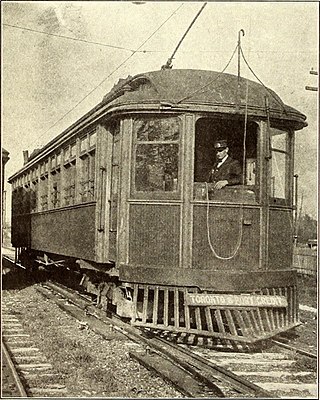
The Toronto and Mimico Electric Railway and Light Company was incorporated in 1890, and operated the Mimico radial line in the Toronto area. The line started operation in 1892 as a short suburban line that later was extended to Port Credit. In 1904, the railway was acquired by the Toronto and York Radial Railway (T&YRR) and became the T&YRR Mimico Division. In 1922, the City of Toronto acquired the T&YRR and contracted Ontario Hydro to manage the four T&YRR lines including the Mimico line. In 1927, the TTC took over the operation of the Mimico line and extended its service eastward to Roncesvalles Avenue. In 1928, the TTC double-tracked the line from Humber to Long Branch and made that portion part of the Lake Shore streetcar line. The portion beyond Long Branch to Port Credit became the Port Credit line, and continued operation as a single-track radial line until its closure on February 9, 1935.
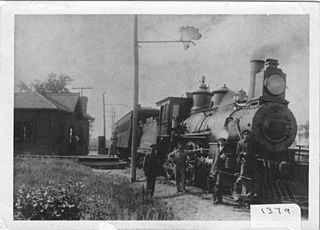
The Schomberg and Aurora Railway was a 36 km long railway in Ontario, Canada, running from the town of Schomberg to Oak Ridges, just south of Aurora. It connected Schomberg to the Metropolitan Line of the Toronto and York Radial Railway (T&YRR) tram service running along Yonge Street, and from there into the Toronto city proper. The service ran for 25 years between 1902 and 1927; the rails were pulled up shortly thereafter.
Ottawa Electric Railway Company was a streetcar public transit system in the city of Ottawa, Canada, part of the electric railway streetcars that operated between 1891 and 1959. Ottawa once had tracks through downtown on Rideau Street, Sparks Street and others, and extended outside of the downtown core to provide services that helped form communities such as Westboro, Old Ottawa South and The Glebe. Prior to this, starting in 1866, public transportation was provided by Ottawa City Passenger Railway Company, a horse-drawn tram service. The O.E.R. was taken over by the Ottawa Transportation Commission in 1948, which was itself succeeded by OC Transpo in 1973.
National Steel Car is the largest manufacturer of railway rolling stock in Canada, based in Hamilton, Ontario. The company was founded in 1912, and has been a top 3 rolling stock manufacturer in Canada for its lifetime. National Steel Car is a subsidiary of National Industries Inc. and is currently led by Greg Aziz, chairman and CEO of National Steel Car.

Toronto-gauge railways are tram and rapid transit lines built to Toronto gauge, a broad gauge of 4 ft 10+7⁄8 in. This is 2+3⁄8 in (60 mm) wider than standard gauge of 4 ft 8+1⁄2 in which is by far the most common track gauge in Canada. The gauge is unique to the Greater Toronto Area and is currently used on the Toronto streetcar system and the Toronto subway, both operated by the Toronto Transit Commission. As well, the Halton County Radial Railway, a transport museum, uses the Toronto gauge so its rail line can accommodate its collection of Toronto streetcars and subway trains. Several now-defunct interurban rail systems also once used this gauge.
